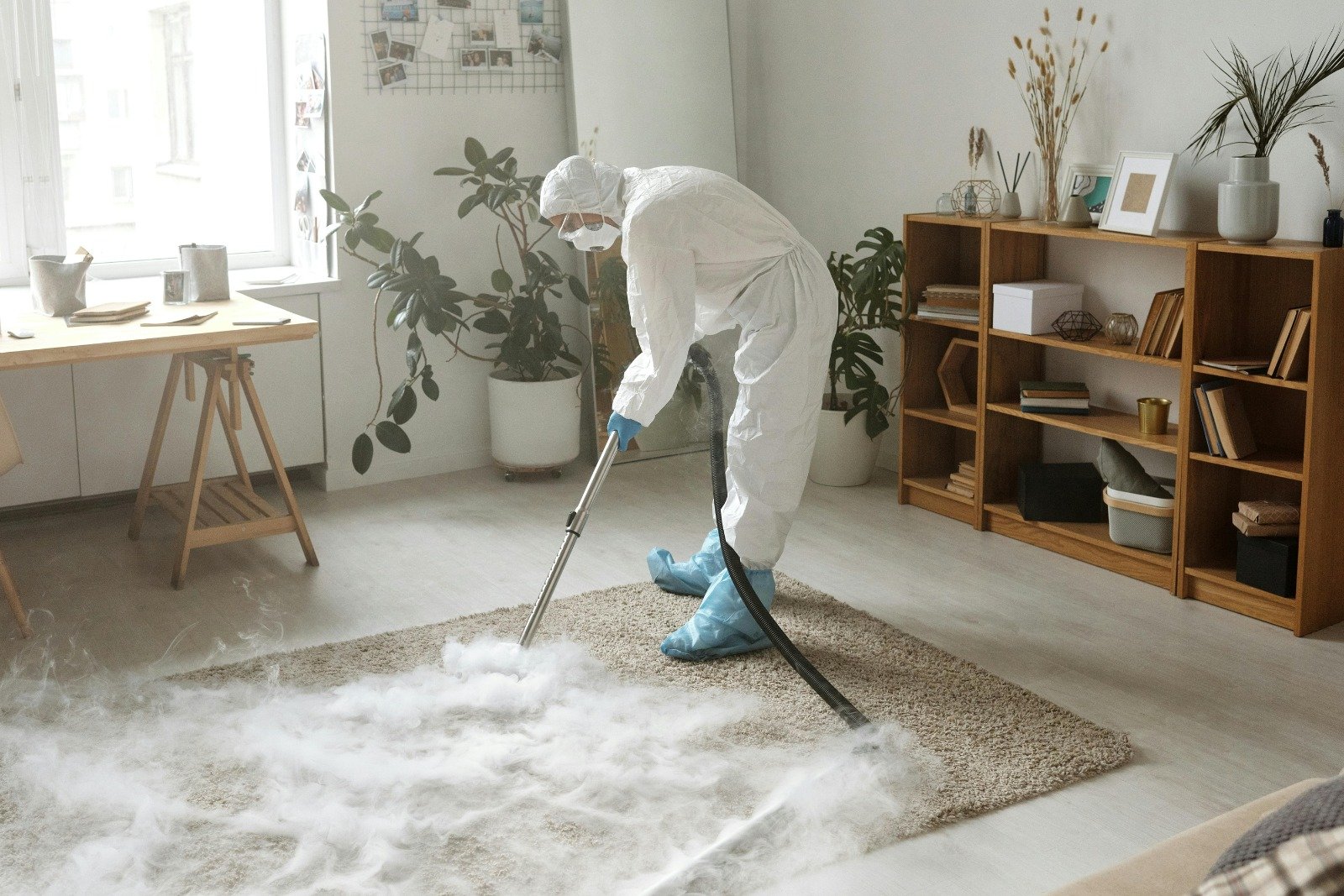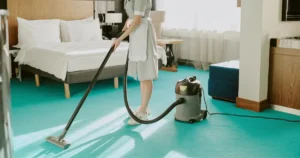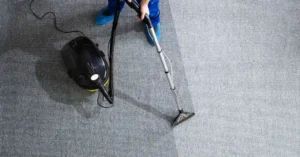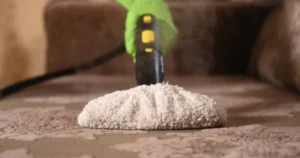1. Introduction
Carpets add beauty, comfort, and warmth to our homes, but they also endure a lot of wear and tear. Whether it’s food spills, muddy shoes, or accidental messes, carpets are prone to stubborn stains that can be both unsightly and difficult to remove. Regular vacuuming helps with surface-level cleanliness, but it doesn’t address stains that seep into the fibers. That’s where proper stain removal techniques come into play. This guide will walk you through everything you need to know to successfully remove even the toughest stains from your carpet.
2. Why Carpet Stains Become Stubbor
Not all carpet stains are created equal. Some become deeply embedded due to the type of substance, how long it sits, or how the carpet was cleaned (or not cleaned) afterward. Organic stains such as coffee, wine, or pet accidents tend to bond with carpet fibers, especially if not treated immediately. Over time, these stains can harden or discolor the fibers permanently. Carpets made from natural materials like wool may also absorb liquids faster, making stain removal more difficult. The longer a spill is ignored, the harder it becomes to treat—this is what turns a simple mess into a stubborn stain.
3. Essential Tools and Supplies for Stain Removal
Being prepared with the right supplies makes stain removal much more manageable. You don’t need expensive products—most cleaning can be done with household items. Keep a few white cloths or paper towels handy for blotting spills. A mild dishwashing liquid, white vinegar, baking soda, and hydrogen peroxide can be used for many different stain types. You might also need a spray bottle, a soft-bristled brush, and a vacuum cleaner. While store-bought carpet stain removers are useful for more serious jobs, homemade solutions are often just as effective.
4. General Carpet Stain Removal Guidelines
No matter the type of stain, there are a few universal rules to follow. First, act fast. The quicker you attend to a spill, the less likely it will leave a lasting mark. Always blot the stain with a dry, clean cloth—never rub, as this can spread the mess and damage the carpet fibers. Start cleaning from the outer edge of the stain and work your way in to avoid spreading it further. Before using any cleaning solution, test it on a small, hidden section of your carpet to ensure it doesn’t cause discoloration or damage.
5. DIY Solutions for Common Carpet Stains
Red Wine
Red wine is infamous for staining carpets quickly. The trick is to blot the spill immediately with a dry cloth to absorb as much liquid as possible. Mix a tablespoon of dish soap with a tablespoon of white vinegar in two cups of warm water. Dab this solution onto the stain with a clean cloth and blot until the stain fades. For extra help, sprinkle salt over the fresh spill—it absorbs the wine and makes blotting easier.
Coffee and Tea
These beverages contain tannins, which are natural dyes that cling to carpet fibers. Start by blotting the area, then apply a solution made of one tablespoon of white vinegar and one tablespoon of dish soap in two cups of warm water. Use a sponge to gently clean the area, and repeat as needed. Rinse with clean water afterward to remove any soapy residue.
Pet Urine and Vomit
Pet stains require immediate action—not just to clean the carpet, but to eliminate odor and bacteria. Blot up as much as possible, then spray the area with a 50/50 mix of white vinegar and water. Let it sit for 5–10 minutes before blotting dry. After the area is dry, sprinkle baking soda and leave it for a few hours or overnight, then vacuum. For persistent odors, an enzymatic cleaner specifically designed for pet stains is highly recommended.
Grease and Oil
Greasy stains may seem impossible to remove, but household items can be surprisingly effective. Cover the stain with baking soda or cornstarch and let it sit for 10–15 minutes to absorb the oil. Vacuum the powder, then apply a small amount of dish soap diluted in warm water. Blot the area gently with a cloth until the stain breaks down.
Ink
Ink stains can be particularly tricky. Isopropyl alcohol is the best option here. Dampen a cotton ball with the alcohol and gently blot the stained area, being careful not to spread the ink. Repeat until the stain is gone, then rinse with clean water and blot dry.
Blood
Always use cold water when treating blood stains—hot water can set the stain permanently. Blot with a dry cloth, then apply cold water mixed with a few drops of dish soap. Gently clean the area and blot dry. If needed, repeat the process until the stain fades.
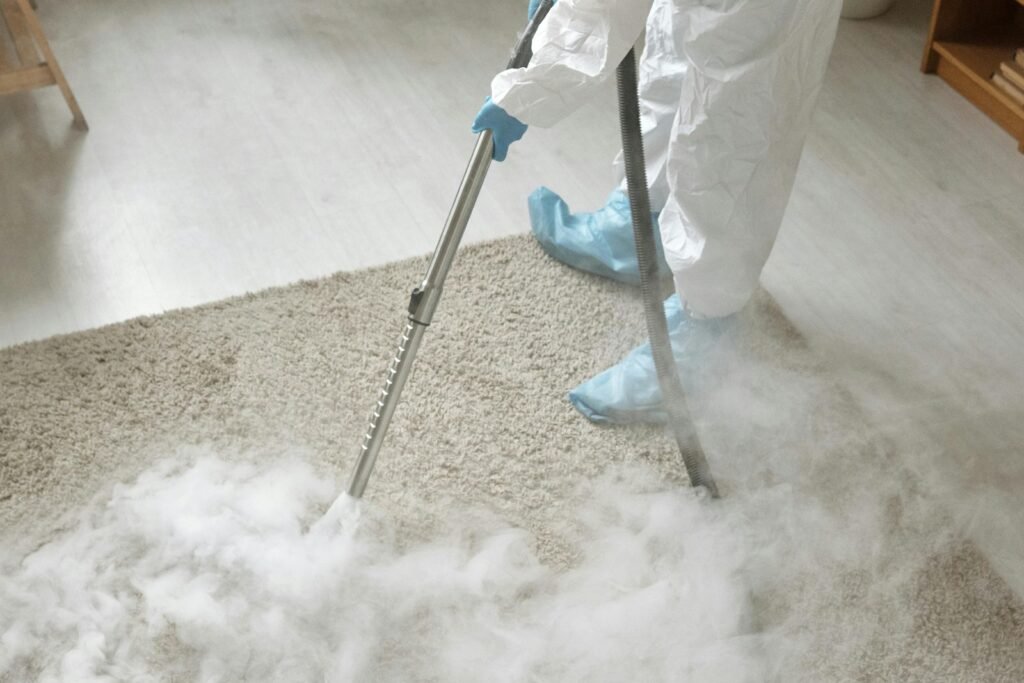
6. Advanced Methods for Tough or Old Stain
Some stains are more persistent, especially if they’ve been left untreated for a long time. For older or darker stains on light-colored carpets, a paste of hydrogen peroxide and baking soda can be very effective. Apply the paste to the stain, leave it for 15–20 minutes, then scrub gently with a brush. Rinse and blot dry. Steam cleaning is another powerful method, especially for large or multiple stains. Steam cleaners loosen debris deep within the carpet fibers, making it easier to extract with suction.
7. Mistakes to Avoid When Cleaning Carpet Stains
One of the biggest mistakes people make is scrubbing a stain harshly. This not only damages the fibers but can also make the stain worse. Another common error is using too much water or cleaner, which can soak the carpet and lead to mold growth underneath. Avoid using colored cloths that might bleed dye onto your carpet. Also, resist the urge to apply heat to speed up the drying process, as heat can set some stains permanently.
8. Tips for Preventing Carpet Stains
Preventing stains is always easier than removing them. Consider using area rugs in high-traffic areas or places where spills are common, like under dining tables. Encourage family members and guests to remove their shoes indoors to keep outdoor dirt from being tracked in. If you have pets, clean up any accidents immediately and use protective mats or training pads. Applying a carpet protector can also create a barrier that makes future stains easier to clean.
9. When to Call a Professional Carpet Cleaner
There comes a point when DIY methods just aren’t enough. If a stain has been set for too long, has a strong odor, or has resisted multiple cleaning attempts, it’s time to call in the pros. Professional carpet cleaners have access to industrial-grade machines and specialized cleaning solutions that can remove even the most stubborn stains without damaging your carpet. If your carpet is expensive, delicate, or made of natural fibers like wool, professional cleaning is the safest option.
10. Conclusion
Stubborn carpet stains may be frustrating, but with the right knowledge, they don’t have to be permanent. Whether you’re dealing with a fresh spill or an old set-in stain, acting quickly and using the correct cleaning methods can save your carpet and restore your peace of mind. From red wine to pet messes, simple household items can go a long way in removing stains. For more serious cases, don’t hesitate to bring in professional help. With a proactive approach and a little know-how, you can keep your carpets clean, beautiful, and stain-free for years to come.

